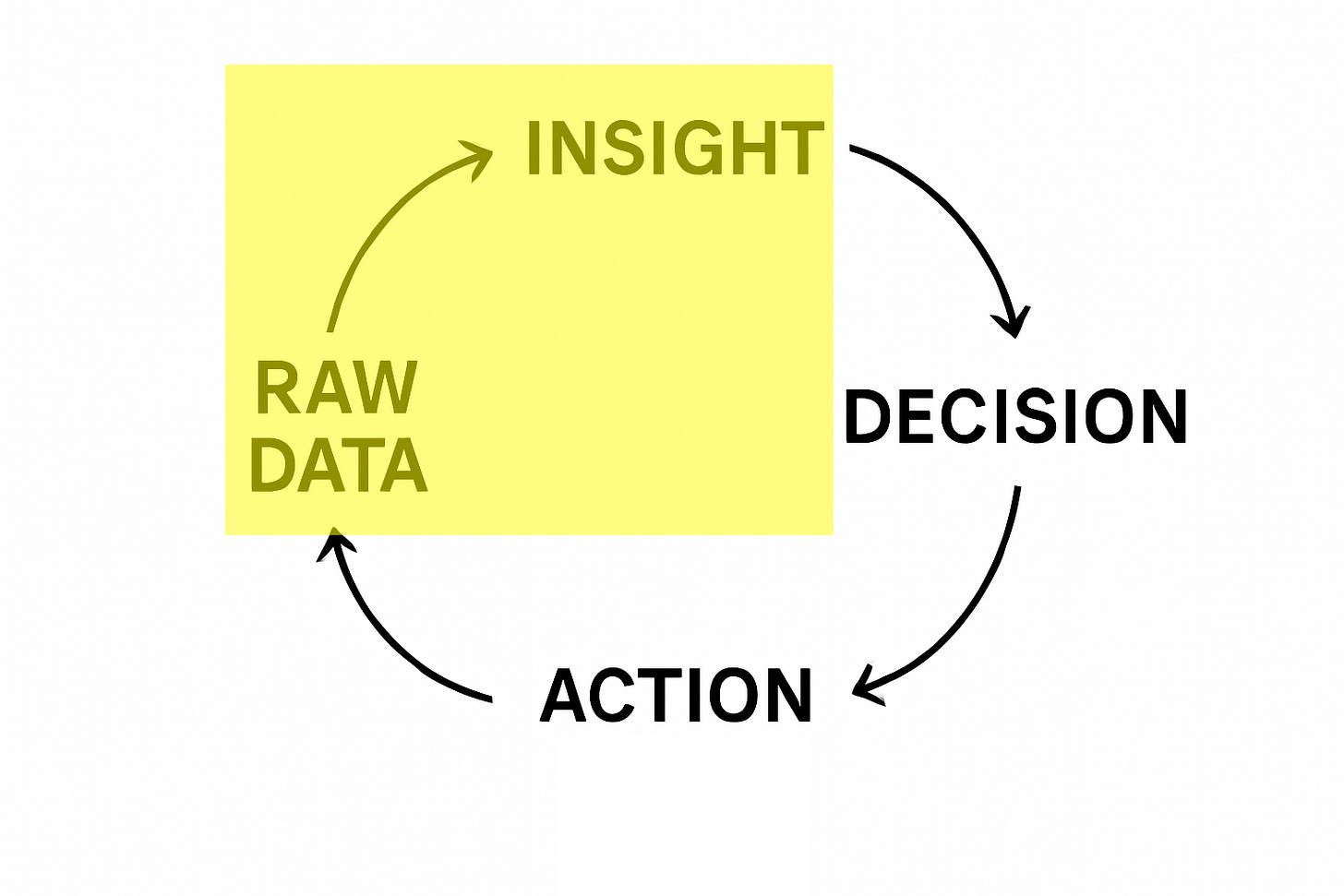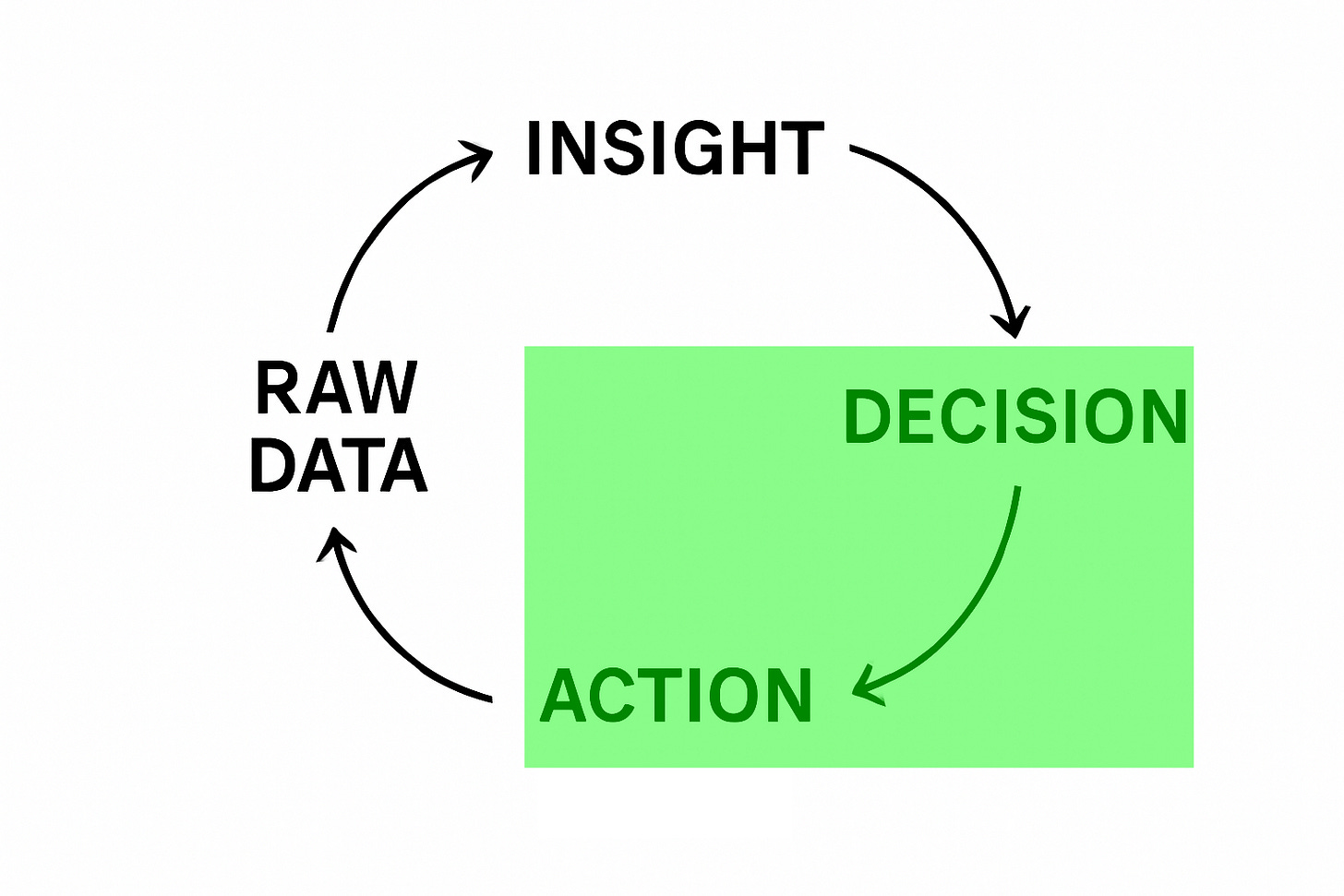The concept of "intelligence" has roots in the Latin word "intelligere," meaning "to understand." This understanding is not merely superficial; it involves grasping deeper, not immediately obvious, aspects of reality.
For decades, enterprises misused the word “intelligence,” building dashboards and reports and calling them “business intelligence.” They bought third-party datasets and called it “market intelligence.” They tracked user behavior and called it “consumer intelligence.” But these weren’t systems that could understand.
They were descriptive systems, but intelligence resided in the minds of those who interpreted them.
What passed for intelligence in the Information Age was, in fact, a vast infrastructure for organising and distributing information. It gave executives more visibility, but not necessarily better judgment. It improved access, not understanding. It created a culture of knowing more, but this did not guarantee quick action and success.
That era is over.
I. The End of the Information Age
Companies of the Information Age digitised information and democratized access, but it was never designed for intelligent behavior. The dominant tools of that era, search engines, BI platforms, and cloud databases, excelled at cataloging the past. But they required humans to interpret the meaning, connect the dots, and make decisions.
This model had clear limitations. Most dashboards offered little more than a glossy rendering of what had already happened. By the time information arrived, it was often too late to act. Executives were buried in reports, KPIs, and retrospective insights, reacting to symptoms without diagnosing causes.
Worse still, the human “decision-makers” at the center of the system were often reduced to guesswork, constrained by time, cognitive limits, and organizational politics. This can’t be intelligence; it is a structured, complex observation.
Even today’s AI-powered software companies have mostly optimized the journey from raw data to insight, neglecting the far more critical leap from insight to action in the real world.
In the image below, it is easy to understand where companies are focused.
II. The Emergence of the Intelligence Age
In the Intelligence Age, software doesn’t just track reality; it works. This age is defined by systems that can learn, reason, and act autonomously and in real time. AI models no longer simply summarise data; they can make decisions and execute on them. They can approve loans, reprice products, optimize fulfillment networks, generate creative content, and even recommend personnel changes, often without human review.
This is not just a technical shift. It’s a paradigm change in how organizations, private and public, will operate. Authority is no longer just concentrated in boardrooms or encoded in business logic. It’s embedded in models. Action is no longer gated by managerial review cycles. It’s increasingly delegated to systems.
The result is a new kind of enterprise: faster, adaptive, and, at times, inscrutable. The very concept of “management” begins to mutate, driving where intelligence-age companies must focus.
III. Why the Old Definition of Intelligence Fails
What most companies called “intelligence” was never intelligent in any meaningful sense. These systems couldn’t learn from experience (except ML). They couldn’t adjust to change. They couldn’t act without a person reading the output and making a judgment call.
Information is passive. Intelligence is active. Information describes. Intelligence behaves.
The difference isn’t only semantic, it’s operational. True intelligence demands systems that can form beliefs about the world, update them based on evidence, and take action accordingly. That requires far more than a pile of historical data. It requires an infrastructure that supports reasoning: dynamic context, live signals, domain-specific knowledge, and a model that can synthesise them all into meaningful action.
IV. Why Most of Today’s AI Deployments Won’t Work
Today, many enterprises are trying to get support from AI by bolting it onto foundations that were never built for true intelligence. They feed models fragmented data, disconnected systems, and documentation stored in human-readable files. The result is predictable: failure.
It’s not the model’s fault. Intelligence can’t emerge from noise. Without a structured, epistemic foundation, where knowledge is coherent, contextualized, and machine-interpretable, even the best LLMs become a liability.
This is the new bottleneck: not the size of the model, but the reliability of the substrate it learns from.
V. The Real Divide: Information Isn’t Knowledge
In the Intelligence Age, the leading companies won’t be those with the most data; they’ll be the ones with systems that can do something with it, fast. Success is shifting from collecting information to cultivating judgment.
These organizations will no longer rely on dashboards and static reports. Instead, they will build living knowledge systems: AI-defined environments that understand what matters, detect change as it happens, and respond autonomously to changes.
Decision and execution become continuous, not episodic.
The real divide is here: companies stuck in the old loop of reporting and review, and those designing systems for real-time action.
Legacy Intelligence can’t cross that gap.
VI. Toward Reliable Intelligence
True intelligence isn’t just about speed or autonomy. It’s about reliability. Systems must not only execute, but they must act in ways that align with goals, adapt to context, and withstand human need for smoothing uncertainty. That requires more than better models. Ingredients:
Trustworthy knowledge, where machines can reason over,
Interfaces where humans can understand how machines operate,
Rewire human brains from static observation to dynamic perception.
The organizations that succeed will treat intelligence not as a layer on top of their operations, but as a new operating approach for the enterprise itself.
VII. Not Smarter Tools but Smarter Systems
The Information Age gave us maps: dashboards, reports, insights neatly packaged for human consumption.
But the Intelligence Age is building self-driving companies, cars, and drones.
Where we once paused to analyze, intelligent systems now move, navigating uncertainty, weighing trade-offs, and taking action in real time.
The challenge is no longer summarising the past. It’s designing systems that operate in the present: reliably, autonomously, and with context.
True intelligence isn’t more information.
It’s the ability to act fast, at scale, under pressure.
This isn’t a better dashboard.
This is true intelligence.




